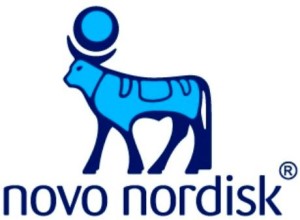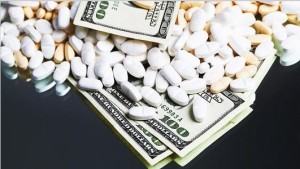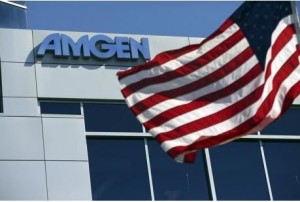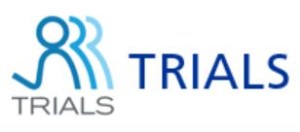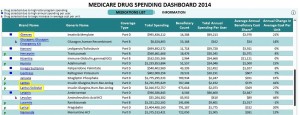- The Startup Tracking ‘Valuable’ Doctors for Big Pharma (bloomberg.com)
Physicians are worth billions of dollars to drugmakers, who see the prescription pad as a path to profits. But it’s growing harder for Big Pharma to get doctors’ appointments. Since 2010, Obamacare has slowly curbed the mass travel junkets and fancy meals that drug companies once used to sway the doctors most valuable to their efforts to sell products...Pharmaceutical companies are now searching for ways to refine their marketing efforts, to target the doctors most compatible with the medications they’re pitching. "You’re desperate for data to make those key decisions,"..."But while there’s lots of data out there, it’s really challenging to bring it together."...Zephyr Health...promising to help drugmakers identify key medical personnel and find ways to approach them…Zephyr builds digital dossiers on individual doctors. It starts with basic information on prescription patterns from data clearinghouses...Then its software...scours the Web for more details...Zephyr generates profiles that score each doctor’s influence and ability to drive sales on a scale of 1 to 10. The software’s slick, mobile-friendly interface lets a drug company search in broad or specialized disciplines and ranks each person’s influence in the chosen field. It also specifies whether a doctor appears to influence colleagues or simply writes a lot of scripts..."There’s nothing private anymore,"...While doctors may not be exactly psyched about Zephyr tracking their every move...even they should appreciate the company’s ability to narrow marketing campaigns. For a physician, "working with Pharma is akin to getting pecked to death by a flock of ducks," he says. "Do you want nine salespeople queued up to call on you?"
- Novo aims to be ahead of pharma pack with Iran investment (tehrantimes.com)
Novo Nordisk, the world’s top insulin supplier, expects to be ahead of the pack now nuclear sanctions are lifted in Iran, thanks to a continuous presence and a pre-emptive investment plan...(Iran) is an attractive target for Big Pharma seeking to sell new medicines to its large and growing population, but going in at ground level and securing good relations with authorities will be key, industry executives say...Medicines were an exception in the nuclear sanctions imposed on Iran, thanks to exemptions for essential drugs and other humanitarian goods. Yet shipping drugs into the country was far from trouble-free, due to tight curbs on financial transactions and restrictions on technology reaching the Islamic republic...“With the sanctions being lifted, we can operate more freely,” Jakob Riis, Novo’s head of marketing told Reuters at the World Economic Forum in Davos, Switzerland...The Danish company has maintained a staff of around 130 in Iran through the sanctions era and it now plans to more than double that, adding 160 additional staff, following a decision in September to invest 70 million euros ($76 million) on a factory...
- Here’s How Much TV Networks Would Miss All Those Viagra Ads (thestreet.com)
Sick of watching those scary, sad drug ads during the the game? So is the American Medical Association…The AMA's declaration that it would seek curbs on the ability of pharmaceutical companies to market prescription drugs… The Tuesday vote by the AMA, one of the world's largest medical trade groups, to lobby Congress as well as the Food and Drug Administration could all but eliminate a key source of ad revenue for network TV companies, including 21st Century Fox , CBS and Disney, already pressured by the success of streaming services led by Netflix, Amazon Prime and Alphabet's YouTube…It could also force changes to the fundamental marketing model of Big Pharma, which commands its own immense lobby. While pharmaceutical companies have lines of lobbyists to call on, so does the American Medical Association…"It's a large and powerful group,"…"A change like this would be a long process…and there would be freedom of speech issues, but it could certainly have an impact down the road."…Direct-to-consumer ads for drugs -- which are illegal in most Western countries -- are extremely popular in the U.S. Advertising dollars spent by pharmaceutical companies have increased 30% since 2013 to $4.5 billion domestically...
- Does new scrutiny threaten pharma’s specialty-pharmacy strategy? (fiercepharma.com)
Valeant Pharmaceuticals rout put specialty pharmacies under an unwelcome spotlight. But though Valeant's own close relationship with Philidor RX may be an unusual one--a host of Big Pharma and Big Biotech companies have now denied similar arrangements--tight links between drug marketing and specialty pharmacies are increasingly common industry wide…Valeant is hardly alone in depending on a specialty pharmacy for sales success. What began as a technique for getting "complex, costly drugs"--often orphan meds for rare diseases--to the appropriate patients has become a broadly used marketing technique…Pharma's pricing and marketing moves are going to stay on center stage for some time.
- Big price hikes widespread in pharma, with dozens doubling last year: Bloomberg (fiercepharma.com)Shkreli Was Right: Everyone's Hiking Drug Prices (bloomberg.com)
Lately, the spotlight has turned on Valeant and Turing Pharmaceuticals when it comes to the drug-pricing debate. But the price-hiking strategy goes far, far beyond that pair of drugmakers...A survey of roughly 3,000 brand-name prescription treatments has found that prices more than doubled on 60 of them since December 2014...And they've more than quadrupled on 20 of the medications over that same timeframe...The data shows that price increases are an integral part of the business plan... The Wall Street Journal pointed to a slew of Big Pharma moneymakers that owed part of their success to hefty price increases...And while Valeant has pledged to nix most of its planned price increases this year, recent political pushback and public scrutiny haven't convinced some of its peers to do away with the practice...As drugmakers have argued, boosting their list prices doesn't mean necessarily boosting their bottom lines all that much. Insurers and health plans negotiate discounts, meaning pharma companies don't reap the entire increase. Still...a higher starting point for negotiations helps them end up at a higher finishing point...Even if they don't get all of that price increase, they will get some of it...
- Promise Of High Prices Now Driving Biopharma R&D Investments (forbes.com)
Once again, the biopharmaceutical industry had another banner year in 2015...in comparing the approvals of 1996 to 2015, a lot has changed over the years...the vast majority of drugs approved in 1996 were small molecule drugs...The drug approvals for 1996 are a reflection of the corporate strategy and the research philosophy embraced by Big Pharma at the time: find drugs that would be utilized by physicians to treat millions of patients suffering from common ailments...The “blockbuster” business model back then focused on having moderately priced drugs broadly prescribed...Companies have not totally abandoned this approach. Last year saw the approval of drugs expected to be billion dollar blockbusters by virtue of treating big populations of patients...What is stunning, however, is to see the number of drugs approved for small or “niche” populations, where high revenues are expected to be generated not by patient numbers but by price. Nowhere is this more evident than in the 14 new cancer drugs...I suspect that, for those who suffer from rare diseases or from certain forms of cancer, this shift in biopharma’s R&D priorities has been welcomed. As shown by the 2015 drug approvals, the promise of favorable pricing did stimulate innovation and improved the health of many. It will be interesting to see if political pressures, particularly in an election year in the U.S., impact this going forward.
- Big Pharma’s Shoes Don’t Fit Amgen (bloombergview.com)
The differences between biotech and pharma have always been a bit arbitrary. They mostly amount to whether the company name has been around for a century or mere decades, and whether there's a "gen" or a "zyne" in there somewhere…One thing investors like about Amgen is its most pharma-like attribute: For years, it was the only biotech to pay a dividend…But the company now risks adapting one of Big Pharma's less-desirable habits: expensive buyouts that risk large chunks of capital and investor goodwill…Amgen would be the latest in a trend of biotechs becoming buyers instead of…targets…Everyone's chasing the same shiny object…The road to every blockbuster drug is a minefield…Amgen's fear of missing out is understandable. But the very fastest way to derail a good thing is through big, bad acquisition. If Amgen wants to keep swinging $10 billion bats, it can't afford to miss.
- Does Marketing Have Too Much Control In Big Pharma Clinical Trials? (forbes.com)
The title of this recent article really says it all: "Characterisation of trials where marketing purposes have been influential in study design: a descriptive study." The authors’ entering hypothesis essentially is that many of Big Pharma’s clinical trials are designed solely for marketing purposes with the trial designs themselves governed by people whose sole concern is drug sales and not the health of patients...Currently, there are few documented examples of marketing trials. Nonetheless, there are reasons why marketing trials should be of concern to patients and physicians. Notably, the research objectives–to promote the use of a medical product–may not be clear to investigators and communicated to participants. The features that suggest a trial may be considered as marketing are, however, currently unclear.
- Vested interests, recruitment of investigators who are frequent prescribers of competing products;
- disproportionally high payments given to investigators;
- sponsorship by the company’s sales and marketing division;
- minimal requirements for data leading to poor data quality
- recruitment of a large number of centres
- Big Pharma’s steady double-digit price hikes cost Medicare billions (fiercepharma.com)Medicare drug costs rose sharply in 2014 (statnews.com)Medicare Drug Spending Dashboard 2014 (cms.gov)The CMS Blog: Medicare Drug Spending Dashboard (blog.cms.gov)
Sanofi, Pfizer, Novartis and peers ratchet up prices on blockbuster meds to reap big sales gains…a new report from the Center for Medicare and Medicaid Services puts some numbers to that claim. They won't resolve the debate over which price increases are "justified," but they do highlight some commonly used meds whose sales growth (grew)--and Medicare spending--depends more on rising prices than on rising demand.
- Vimovo...price hike at 543% for 2014... boost helped send spending on the drug up past $38 million from just over $7 million in 2013…patients using the drug only grew by 8%.
- Targretin...unit cost rose by 123% last year, to $145.65...CMS shelled out $73.5 million, more than double its 2013 spending…increase in patients of just 12%.
- CMS laid out $1.725 billion for Lantus last year, a $400 million increase year-over-year despite a 6% decline in patient count.
- CMS spent another $2.02 billion for Lantus Solostar, an increase of almost $700 million, or about 50% year-over-year...patient growth amounted to 13%.
- Gleevec sent CMS' unit costs up by 21% last year, to $179.93...that pushed spending per user to $69,212. The number of patients using the drug ticked upward by 5%...spending on the drug grew by 28%, to almost $1 billion.
- Lyrica...up in price...about 20%...to $4.28 per pill. Medicare spent $1.4 billion on the drug in 2014, up from just over $1 billion in 2013...patients grew by 7%.
When Sanofi, Pfizer and Novartis were raising their prices...they were fighting to fill patent-cliff sales gaps and scrambling to refill their pipelines of prospective new drugs. They were also spending billions on R&D--and on stock buybacks, dividends and other shareholder-friendly moves. Horizon and Valeant, by contrast, aren't big R&D spenders; Valeant, at least, has defended its price hikes as necessary to deliver returns to shareholders.
- Regenerative Medicine: Could This Be Healthcare’s Saving Grace? (forbes.com)
Regenerative medicine is one of the fastest growing biomedical industries in the world because patients are being cured of diseases that were once incurable…represents a new paradigm in human health because the vast majority of treatments for chronic and life-threatening diseases focus on treating the symptoms, not curing the disease…there are few therapies in use today capable of curing or significantly changing the course of a disease. New regenerative medicine is changing this by engineering, growing, and regenerating tissues and organs using biological processes similar to those normally used in humans…Cell therapy makes up over 60% of the regenerative medicine market…Pharmaceutical companies are building relationships with innovating regenerative medicine companies… Transnational supply-side economics is driving the market; there is low regulation and multiple offerings for numerous conditions, with some being offered to treat life-threatening diseases. Regenerative medicine has the potential to ultimately change the way medicine is practiced throughout the world.


